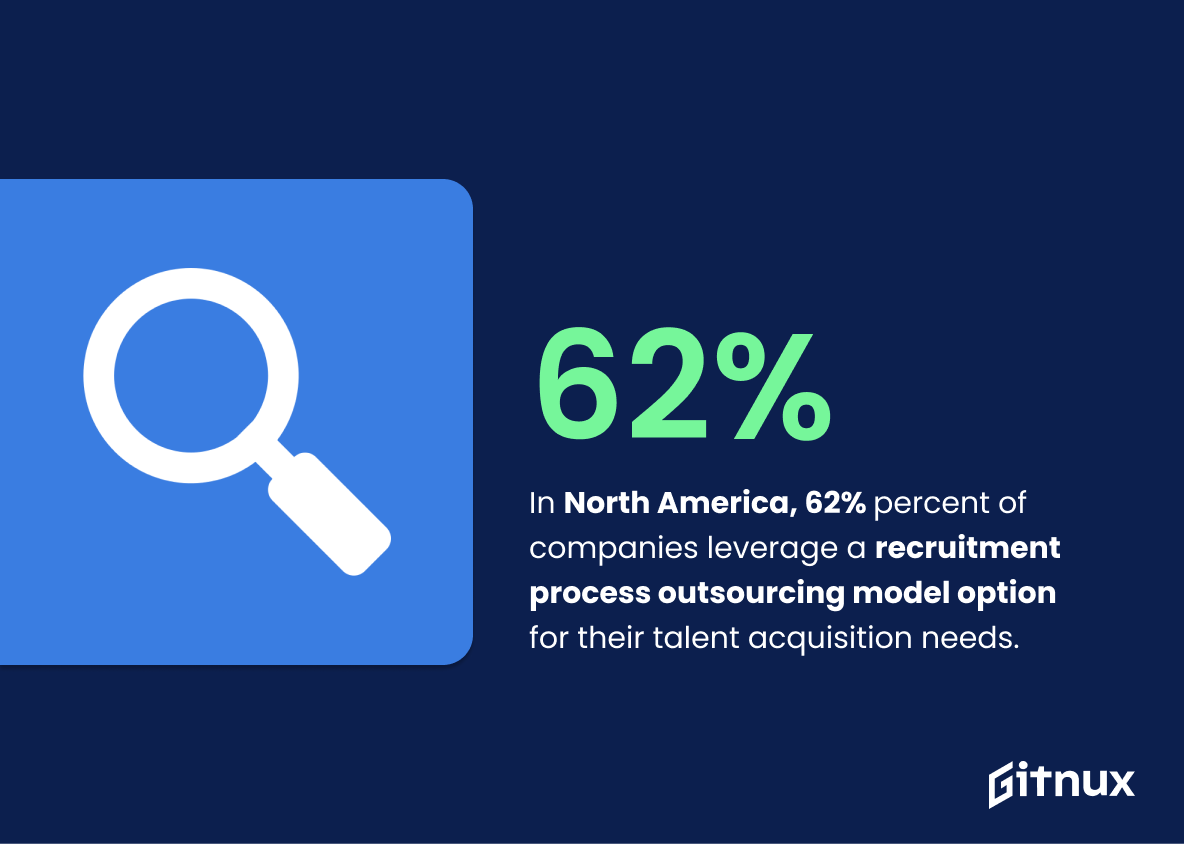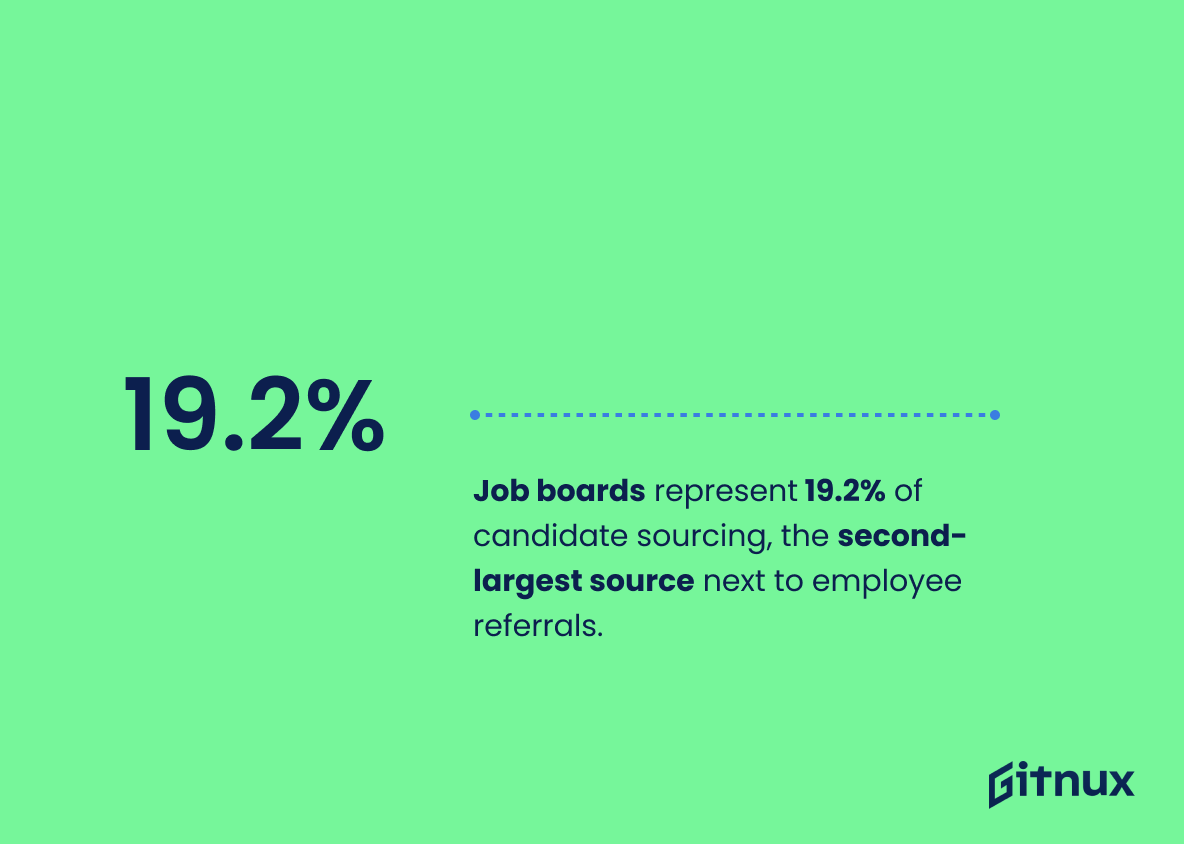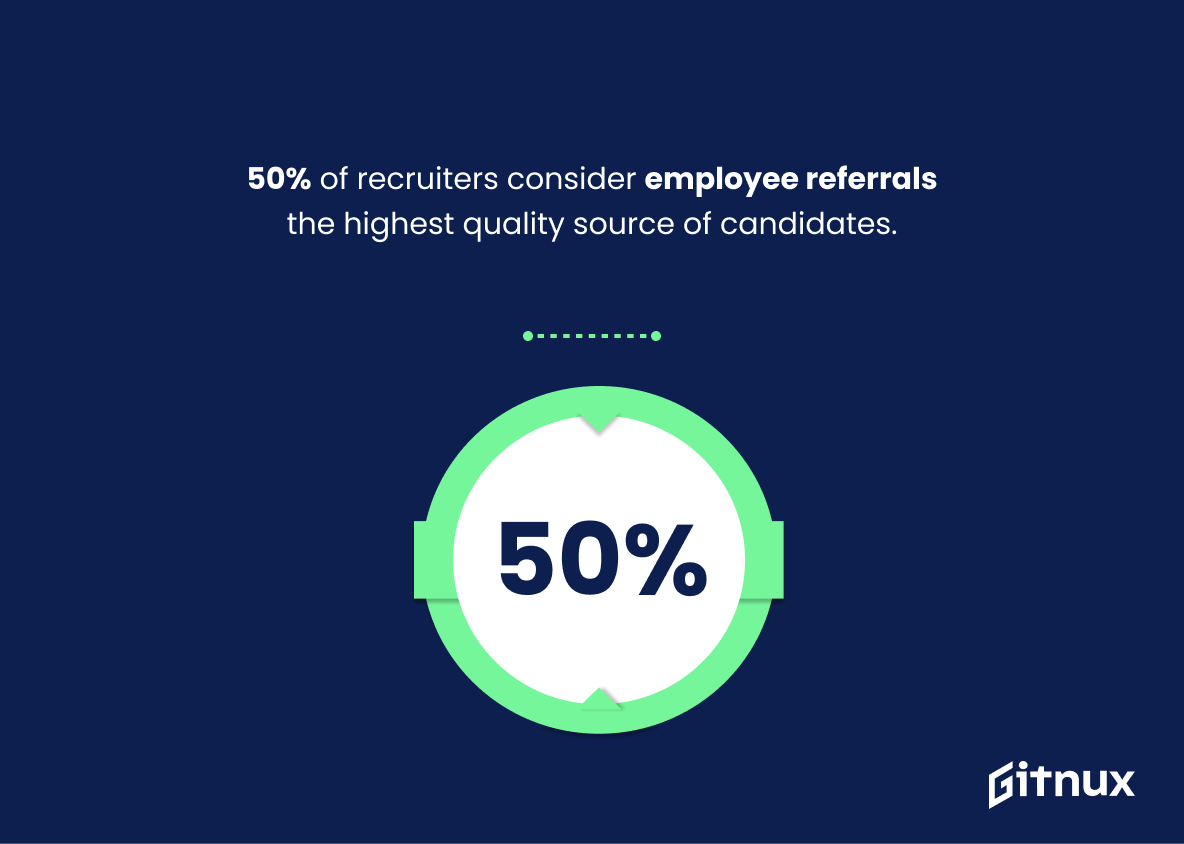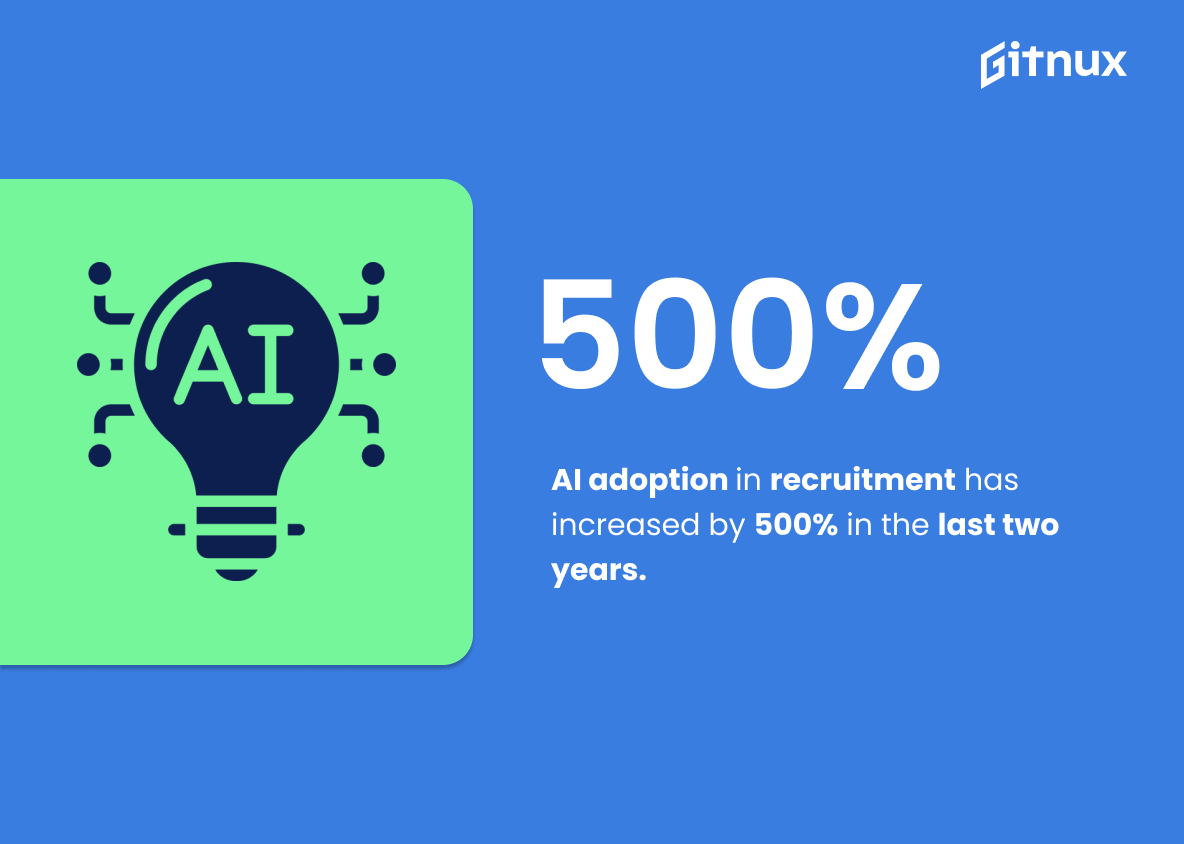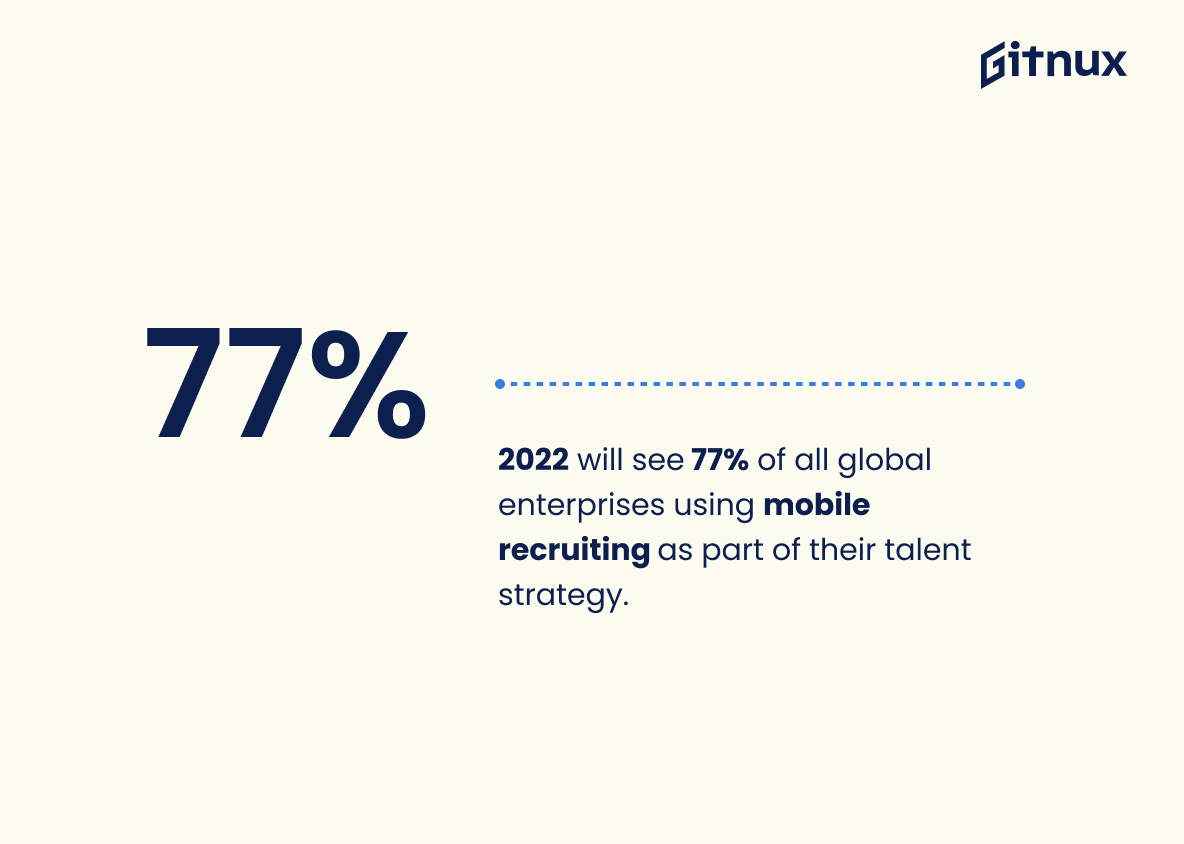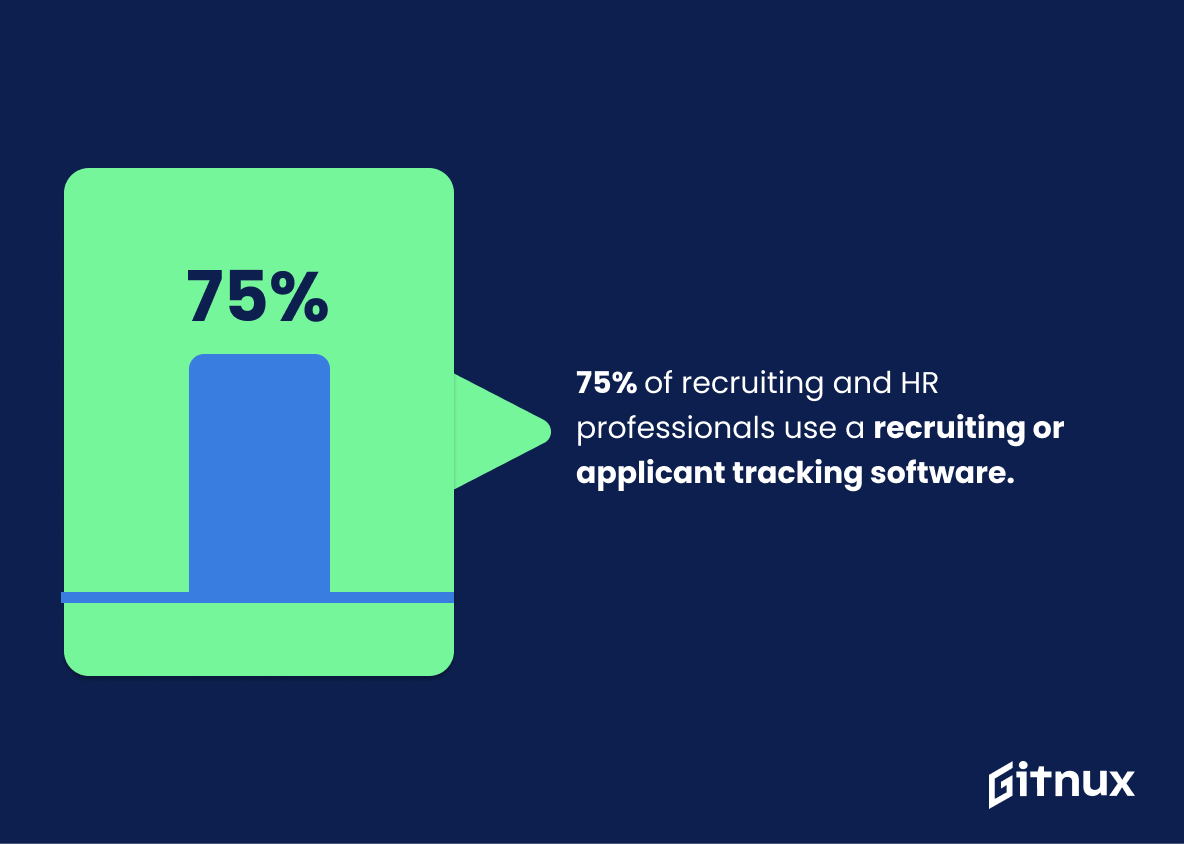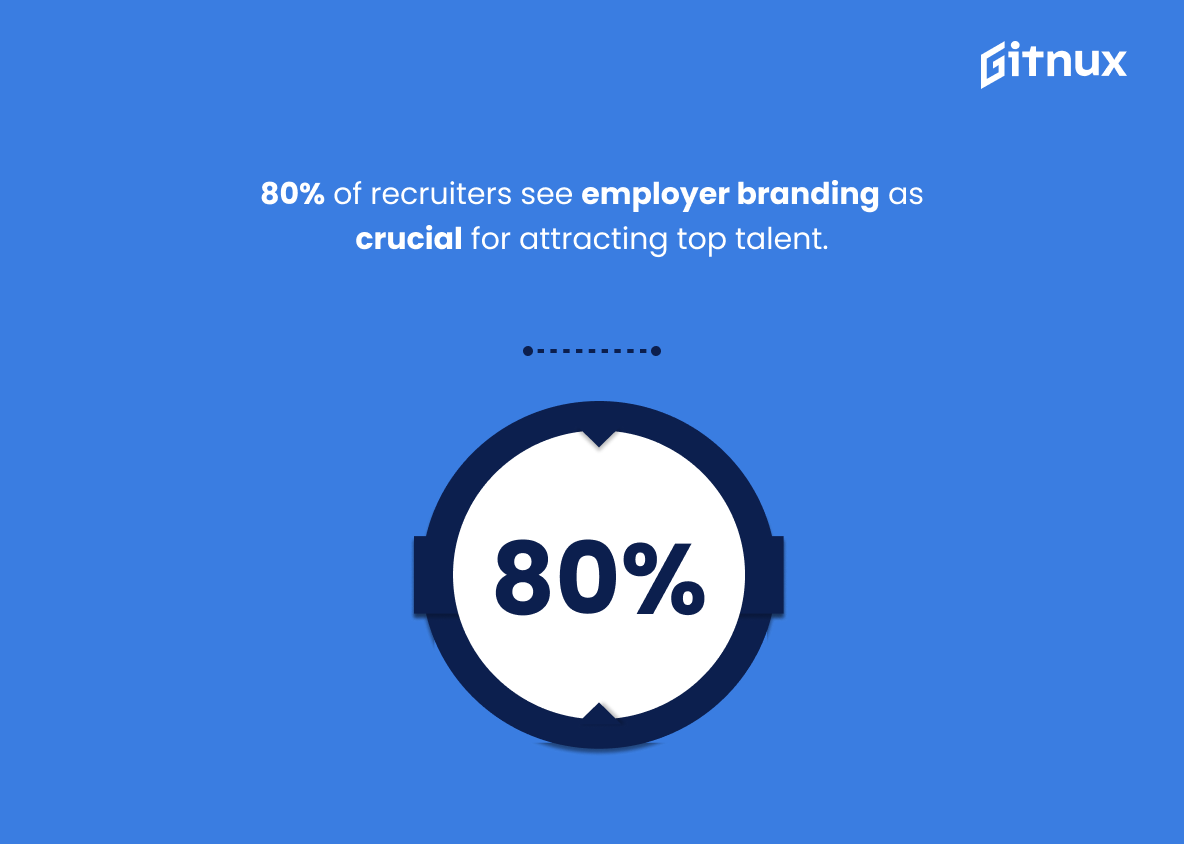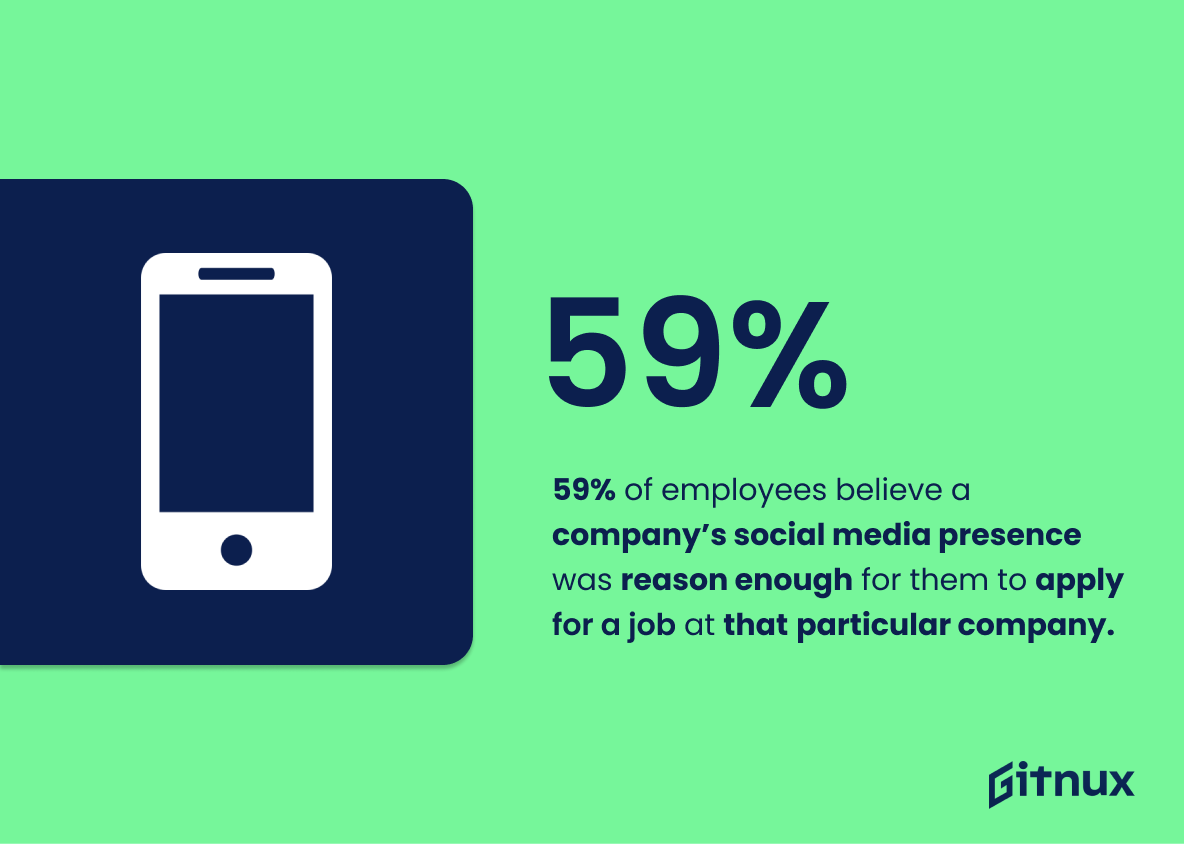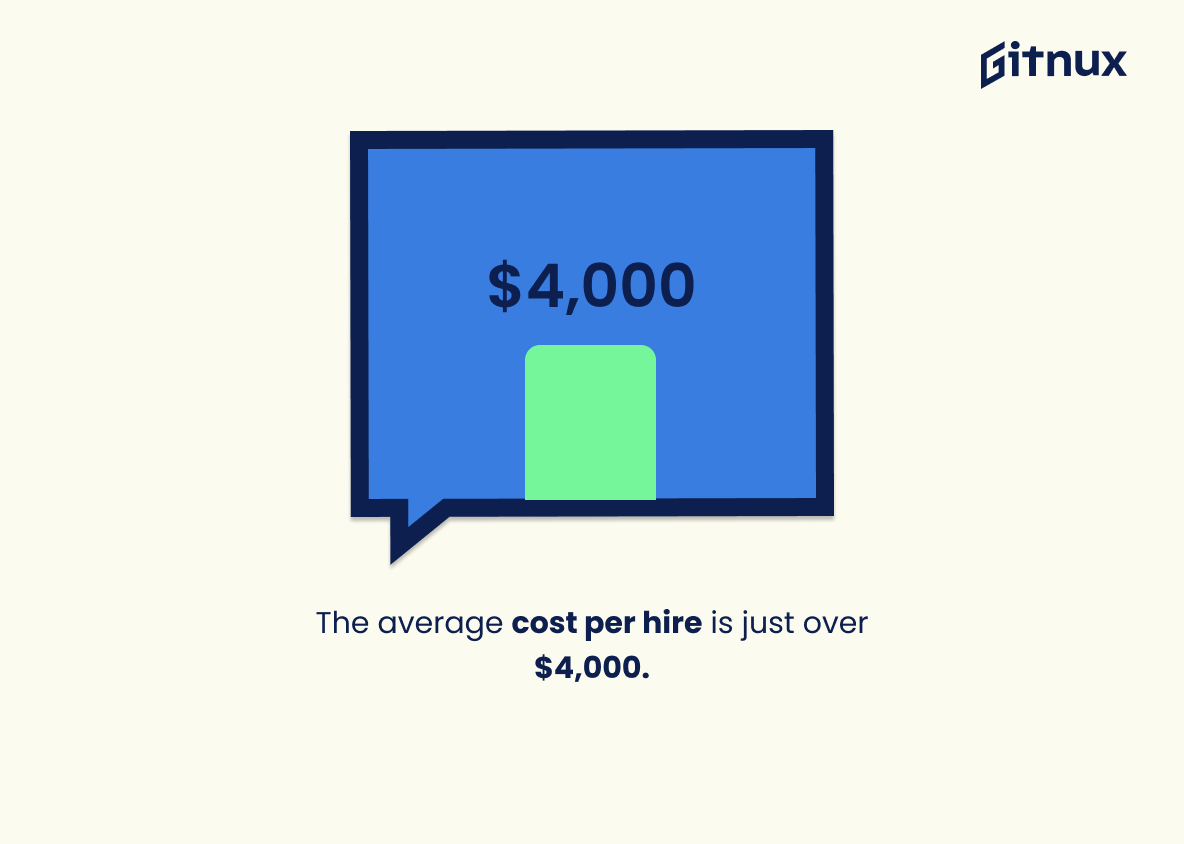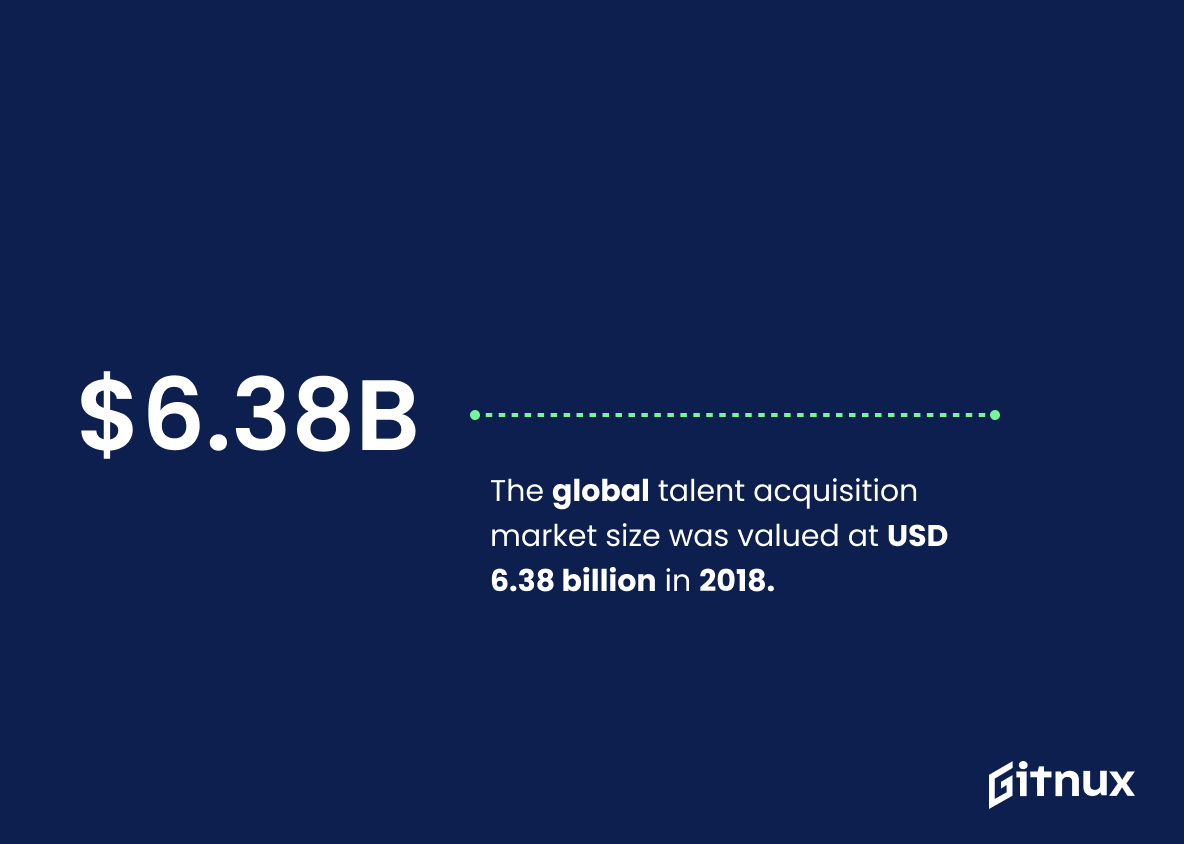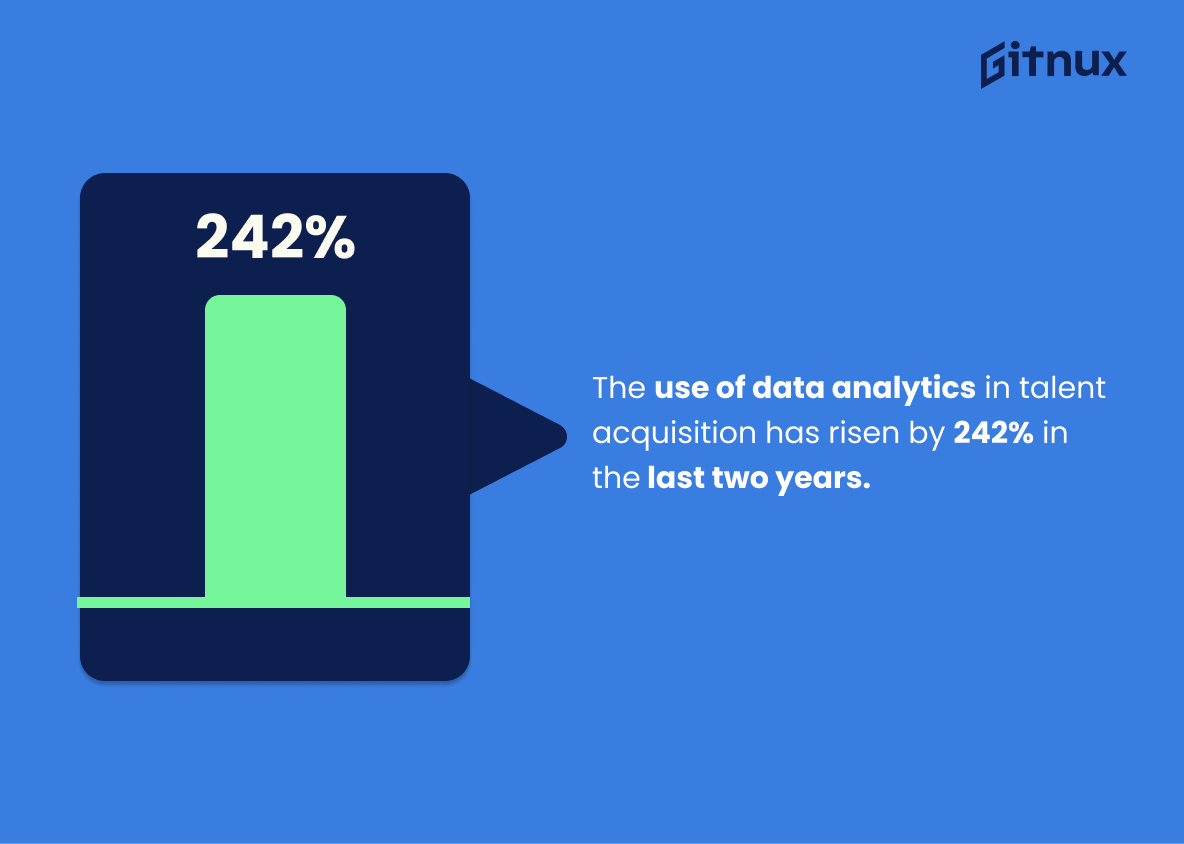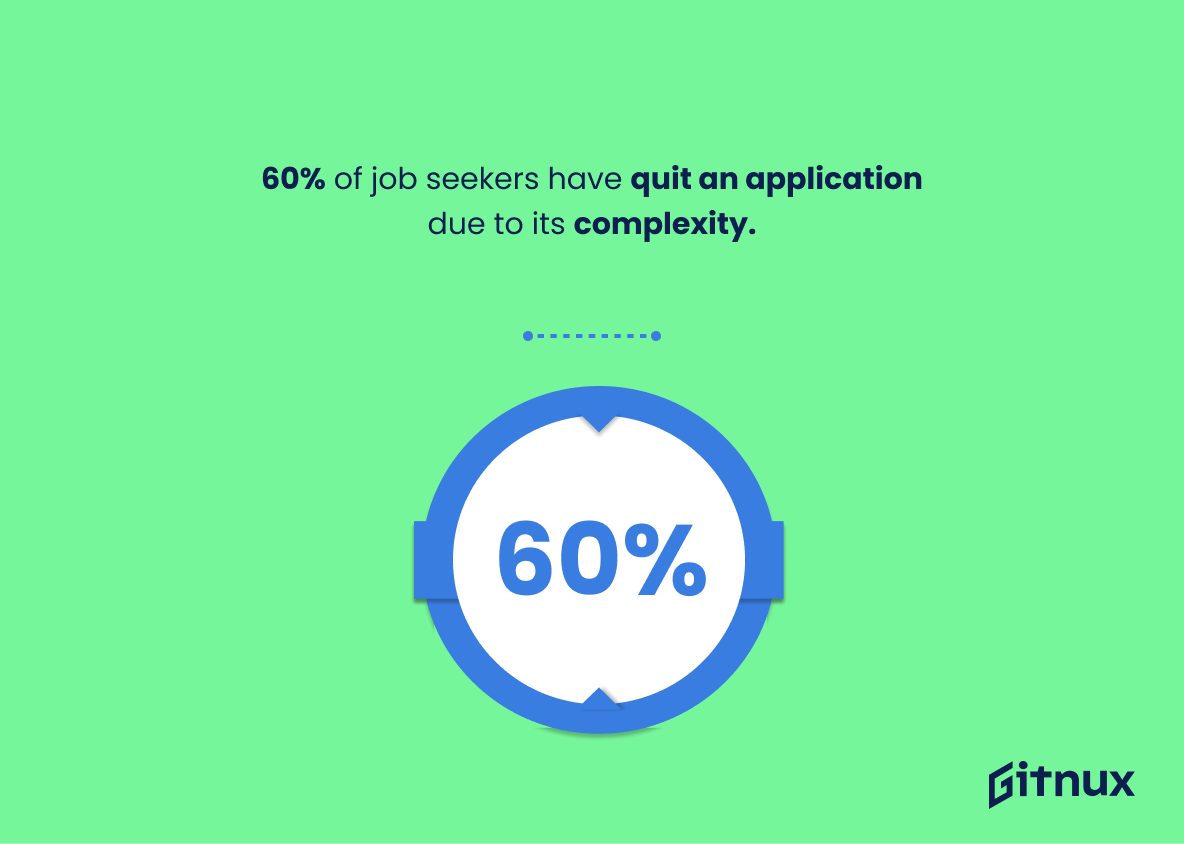In an increasingly competitive business landscape, talent acquisition has effectively become a strategic cornerstone for organizational growth and success. Unlocking important insights surrounding this industry through data and analytics plays a crucial role in devising effective recruitment strategies. Our comprehensive dive into the latest Talent Acquisition Industry Statistics will shine a light on key trends, challenges, and opportunities that are shaping our workplaces today and setting the stage for the future. Whether you’re a seasoned HR professional or a business leader looking to optimize your workforce, these statistics will offer invaluable insights to power your talent acquisition strategies, helping you attract, recruit, and retain the very best talent your industry has to offer.
The Latest Talent Acquisition Industry Statistics Unveiled
In North America, 62% percent of companies leverage a recruitment process outsourcing model option for their talent acquisition needs.
An understanding of this vivid statistic illuminates the current trend within the North American talent acquisition industry. The hefty 62% marker of companies opting for a recruitment process outsourcing model signals a substantial shift towards entrusting external industry experts in securing talent. Unpacking this stat reveals greater operational efficiency and a significant focus on cost-effective strategies in the recruitment process. Consequently, it forecasts the potential direction of the talent acquisition landscape, offering valuable insight for industry stakeholders to strategize and stay competitive.
The global recruitment process outsourcing market is projected to reach US$ 20.8 billion by the year 2027.
As our eyes gaze into the future of the Talent Acquisition Industry, we can’t help but note the palpable pulsations of growth shaking the very foundations of the recruitment market. The projection that the global recruitment process outsourcing market would swell to an astounding US$ 20.8 billion by 2027 creates an aura of anticipation brimming with opportunities firsthand. This monetary growth is not just a finger on the pulse of the industry’s health, but also a mirror reflecting the rising reliance of organizations on specialist expertise for talent acquisition. It accentuates the mounting importance of strategically vesting responsibilities to ensure that organizations have access to top-notch talent, thus shaping successful futures. In the grand tapestry of Talent Acquisition Industry Statistics, this figure emerges as a knot, tying together the importance of outsourcing, prospective market growth, and businesses’ drive to refine their recruitment strategies.
Job boards represent 19.2% of candidate sourcing, the second-largest source next to employee referrals.
Diving into the world of talent acquisition statistics, an intriguing insight emerges. Job boards, accounting for 19.2% of candidate sourcing, nestle in the silver spot following employee referrals. It’s like uncovering a treasure chest of unexplored opportunities for employers. This figure not only highlights the significant relevance job boards still hold in our digital era, it also serves as a roadmap pointing recruitment strategies towards an efficient and promising resource, subsequently shaping the industry’s trends and practices.
About 79% of job applicants use social media platforms during their job search.
Leading the march in the digital age, a significant figure of 79% of job applicants harness the power of social media during their job search. Placed alongside other Talent Acquisition Industry Statistics, this specific insight captivates attention. Illuminating the evolving landscape of talent acquisition, it emphasizes how the traditional methods of job searching are undergoing a transformation, replaced increasingly by platforms like LinkedIn, Twitter, and Facebook.
It thrusts a spotlight on the potentially untapped reservoirs of talent on these digital platforms and encourages companies to leverage their social media space to attract quality applicants. Thus, it carries critical implications for recruitment strategies; casting the net on social media might just reel in the ‘big fish’ companies are searching for.
Remember, where the talent hunts has changed and adaptability is key. Begin the digital dive now or risk sinking in the whirlpool of obsolescence.
50% of recruiters consider employee referrals the highest quality source of candidates.
In the ever-changing landscape of talent acquisition, recruiters have discovered a gold mine of potential candidates: employee referrals. Diving into the depths of this veritable gold mine, an illuminating statistic has surfaced. A compelling half of all recruiters regard these referrals as the crown jewels of their candidate sourcing. These referrals are not merely names gleaned from a list; they are faces, personalities, and skills known and vouched for by existing employees. This statistic illustrates the significant value recruiters attribute to firsthand, personal knowledge of a candidate’s capabilities, thus reshaping traditional talent acquisition strategies. It underscores the burgeoning trend of leveraging the power of networking, and by extension, the value of a cohesive and satisfied team in the perpetual hunt for talent.
AI adoption in recruitment has increased by 500% in the last two years.
Charting a significant course in the waves of change, the staggering 500% escalation in AI adoption within recruitment over the past two years shines a huge spotlight on the evolving landscape of the Talent Acquisition Industry. It cranks open a door to a future-oriented viewpoint, seeing technology not as an option, but an indispensable ally in revolutionizing how we seek and retain talent. In the quest for efficiency and precision, this leap in AI use symbolizes a dramatic shift towards automation and predictive analytics, propelling businesses to stay competitive and innovative. Furthermore, it underlines potential new challenges and opportunities, as AI begins to play a central role in shaping the standards, strategies, and prowess in talent acquisition. As the tide swells in favor of digital transformation, this vital statistic nudges us to examine novel dimensions of human-tech collaboration in recruitment, steering conversations, and actions towards better, faster, and more intelligent hiring processes.
52% of recruiters say the hardest part of their job is identifying the right candidates from a large pool of applicants.
Undoubtedly, the statistic that 52% of recruiters find the greatest challenge in sifting through a vast sea of hopefuls to discover the fitting candidate, casts a revealing light on the complexities of the talent acquisition industry. It underscores the growing importance of honing the art of spotting potential among heaps of resumes, intensifying the need for more sophisticated recruitment strategies. Furthermore, this statistic serves as a clarion call for revolutionizing traditional hiring practices, pushing the envelope towards adopting technological advancements such as AI and Machine Learning for efficient candidate selection. Shedding light on this overwhelming stress point creates a persuasive narrative for the industry, advocating for innovation and fine-tuning strategies to keep up with an ever-tightening competitive market.
2022 will see 77% of all global enterprises using mobile recruiting as part of their talent strategy.
The revelation of an anticipated 77% engulfment rate of mobile recruiting into global enterprises’ talent strategies provides a remarkable insight into the transformative nature of the Talent Acquisition Industry in 2022. Offering a crystal-clear reflection of the rising dominance of technology in the recruitment process, it highlights not just the evolving preferences of recruiters, but also gives a hint at the expectations of the evolving job market. This underscores a clear shift towards convenience, accessibility, and digital integration in scouting talent, therefore, painting a vivid image of what the frontier of future talent acquisition looks like. Furthermore, it nudges companies lagging in this trend to rethink their strategies if they wish to gain a competitive edge in the race for global talent. In this light, this statistic lays bare the pulse of the talent acquisition industry, driving home the message that the future of recruitment is digital, and more so, “mobile”.
75% of recruiting and HR professionals use a recruiting or applicant tracking software.
Understanding trends and techniques in the Talent Acquisition Industry can be like navigating a labyrinth. The tidbit that 75% of recruiting and HR professionals leverage a recruiting or applicant tracking software underscores the increasing reliance on technological innovation in this field. It not only highlights the ongoing quest for efficiency and effectiveness in talent hunt but also points to the fact that not marching in step with such prevalent practices could leave laggards at a competitive disadvantage. This figure illuminates the path for recruiting agencies and HR departments contemplating an upgrade to their recruitment strategy, who can infer from this rising trend, the potential benefits as well as the importance of utilizing such softwares in today’s digital era.
80% of talent acquisition managers and recruiters agree that employer branding has a significant impact on the ability to hire great talent.
Painting an insightful picture, this statistic unfurls the vast importance of employer branding in the talent acquisition industry. Applied as the headline of a blog, it decisively sets the stage for a compelling narrative on how the perceptions and image of an employer can be the keystone in enticing or repelling top-tier talent. It plunges into the heart of the matter, weaving the critical connection between smart branding strategies and the magnetic pull of world-class talent. Like a skilled puppeteer, it empowers talent acquisition managers and recruiters with the strings to control the dance of hiring success. This statistic, therefore, isn’t just a number—it’s a bold statement with a resounding echo in the industry’s corridors, establishing employer branding as a vital cog in the machine of successful talent acquisition.
59% of employees believe a company’s social media presence was reason enough for them to apply for a job at that particular company.
Diving headfirst into this impactful statistic, we see that 59% of employees pinning their job application decisions on a company’s social media presence demonstrates a seismic shift in the talent acquisition industry. This statistic loudly echoes the increasing role that digital platforms are playing in shaping an organization’s image and attracting potential employees. Consequently, it goes beyond being just a figure; it’s a poignant statement about the power and potential of social media in modern talent acquisition strategies. It encourages businesses to re-evaluate their online persona and adopt a strategic approach to social media presence, thus appealing to potential talent and transforming it into a powerful recruitment tool. This digital era makes this statistic a cornerstone in understanding how the recruitment landscape is evolving and how businesses can leverage it to gain a competitive edge in the talent acquisition industry.
The average cost per hire is just over $4,000.
In the realm of talent acquisition, where the ultimate treasure trove is a pool of qualified, skilled, and motivated personnel, knowing how much it costs to reel in a new recruit – over $4,000 on average – adds an economic dimension to the conversation. This nugget of information provides a measuring stick, a benchmark if you will, to assess the efficiency and effectiveness of an organization’s recruitment strategy. It prompts companies to reflect – are they paying a premium for top-tier talent, or squandering resources on ineffective strategies? It also influences budget allocations within human resources departments and encourages innovation in cost-effective talent sourcing methods. Indeed, in the corporate pursuit of human capital, this monetary figure is as vital as the talent itself.
The global talent acquisition market size was valued at USD 6.38 billion in 2018.
Diving into the vibrant currents of the Talent Acquisition Industry, one encounters an intriguing figure: USD 6.38 billion—the very market size globally in 2018. This considerable sum isn’t merely a stand-alone figure—it’s a resonating echo of the industry’s potency and growth potential. Embedded in this figure are countless interactions, transactions, and partnerships shaping the global talent acquisition sphere. Moreover, it signposts the monetary muscle of the sector, highlighting the considerable resources at its disposal to innovate, expand, and disrupt. Thus, this statistic paints a compelling portrait, condensing the sheer significance and robust health of the global talent acquisition marketplace in 2018. It provides valuable context for readers, offering an economic barometer against which to measure future trends, industry shifts, and growth potentials. So, as we delve deeper into the future of this industry, let’s bear in mind the echoes of this commanding figure.
The use of data analytics in talent acquisition has risen by 242% in the last two years.
In tapping into the vibrant pulse of the Talent Acquisition Industry, one of the most compelling revelations is a staggering 242% surge in the employment of data analytics over the recent two-year span. This monumental shift signifies a transformative turn in the industry’s trajectory, underscoring the escalating reliance on data-driven insights for effective talent acquisition.
The 242% explosion not only evidences the escalating prioritization of data-informed strategies but also sets a dynamic new stage in the recruitment landscape. Employers are by no means playing a guessing game anymore. They are leveraging analytics to gain a precisely nuanced understanding of the talent market, heightening their capacity for discerning and capturing the best skills in the crowded field.
Less a trend and more a revolution, this statistic propels in stark relief the indispensable role of data analytics in today’s talent acquisition, asserting its status as the engine that drives forward-thinking recruitment strategies. This statistic, therefore, underlines the fact that the firms which are not aligning their tactics with this innovative ethos may, in fact, be left trailing in the wake of this fast-progressing transformation.
60% of job seekers have quit an application due to its complexity.
In the unforgiving arena of talent acquisition, where the prowess to attract and retain top talent determines the victor, the striking statistic that ‘60% of job seekers have quit an application due to its complexity’ takes center stage. This statistic beams a spotlight on the labyrinthine nature of certain job applications that poses a high hurdle for potential applicants. More than a vanilla number, it raises the curtain on the hidden dynamic of job hunting, showing hiring teams the impending risk of losing highly-qualified candidates simply due to complex application processes. In an industry characterized by the ceaseless hunt for top-tier talents, this statistic is a clarion call for companies to design user-friendly applications because, at the end of the day, the one who perfects the application process wins the recruitment race. This reiterates the need for simplicity in application designs, encouraging hiring professionals to optimize user experience if they aspire to reel in the best catch in the talent pool.
A good 89% of companies expect to be much more digital in talent acquisition processes post-COVID-19.
In a world where the post-COVID era is almost upon us, the revelation that a hefty 89% of companies project an intensified digital drive in talent acquisition procedures underlines a significant pivot in the industry dynamics. The landscape of talent acquisition is shifting from traditional methods towards the digital frontier, indicative of a revolutionary change in recruitment strategies and the drive to embrace emerging technologies. This transformation will reshape the structure and functionality of the talent acquisition industry, ushering in an era where digital fluency will be a game-changer. Consequently, this statistic serves as a litmus test for the industry’s readiness to morph and adapt to these tech-driven methodologies. It underscores the urgency for those within the industry to revamp their skill-set and stay technologically relevant or risk being left behind in this digital race. Additionally, it sets the stage for a domino effect, where the move to digital will ripple across facets of employee onboarding, engagement, and ultimately, retention.
The average time to hire (from application to offer) is approximately 3 weeks.
Navigating the intricate labyrinth of the talent acquisition industry, one cannot disregard the significance of the ‘Average time to hire’ statistic. Hovering around the span of three weeks, from application to offer, this statistic serves as a crucial barometer for many entities involved in this ecosystem.
From the company perspective, it provides a measure of their efficiency and competence in identifying, engaging, and securing potential candidates. It represents their response time in a competitive marketplace where the race is on for acquiring the top-notch talent. A longer hiring process might imply missed opportunities, inefficiencies or even potential bottlenecks in the recruitment pipeline.
The average time to hire is also a key metric for prospective candidates. The briefer the duration, the lesser the uncertainty and strain for job seekers, thus improving their overall candidate experience. An efficient hiring process boosts a company’s reputation among prospective talents and might be the discerning factor for job seekers who are contemplating multiple offers.
Lastly, for the recruitment industry as a whole, this number acts as a benchmark, guiding talent acquisition strategies and technologies towards continuous optimization and innovation.
In this rapidly evolving talent acquisition landscape, the ‘Average time to hire’ statistic is not just a figure. Instead, it’s the silent pulse echoing the synergy between employers, applicants, and the recruitment industry.
31% of new employees quit in the first six months.
Shining a spotlight on the glaring statistic that ‘31% of new employees abandon their roles within the first six months,’ demonstrates a hefty challenge faced within the Talent Acquisition Industry. This alarming proportion paints a vivid picture of the transient nature of employee tenure in various companies, pressing the urgency for efficient and targeted recruitment strategies. It also underscores the significance of employee integration processes post-hire, reminding HR professionals that talent acquisition doesn’t end at recruitment, but extends to retainment and satisfaction. This figure serves as a reality check, prompting a rethink on hiring strategies, retention methods, and overall company culture to create sustainable, long-term relationships with new hires.
Talent acquisition technology can shorten the hiring cycle by up to 18 days.
The statistic ‘Talent acquisition technology can shorten the hiring cycle by up to 18 days’ is like the magic key to a secret room for businesses in the Talent Acquisition Industry. Not only does it unlock the potential of swift decision-making, it also brings about massive cost efficiency. The mantra ‘Time is Money’ takes center stage with this piece of data. With technology in their arsenal, companies are able to speed up their hiring process, thereby allocating that saved time to other valuable tasks. They are also more likely to secure the best talent before their competitors. Overall, this statistic acts like a catalyst for innovation, productivity, and superiority in the Talent Acquisition Industry.
More than 70% of job seekers would turn down an offer if the candidate experience is poor.
The heart of talent acquisition pulsates with the urgency of curating an optimal candidate experience. What might be shocking to some might be the colossal statistic stating that more than 70% of job seekers would discard an offer if the candidate experience is poor. Now this is more than just a number, it’s a stark reminder that neglecting candidate satisfaction comes with a perilous price. Instead of a bustling hub of potential talent, the outcome could be an exodus of quality candidates, leaving the recruitee pool barren. Therefore, this enhances the weight of ensuring a positive journey for the prospective candidate, right from the job listing, the application form, to the interview process and beyond. The take-away, dear readers, is the undeniable necessity of investing in a well-structured, human-centric, and amicable candidate experience, lest we risk losing seven out of ten potential game-changers to poor first impressions.
Conclusion
To summarize, the talent acquisition industry is consistently evolving, fueled by technological advancements, demographic shifts, and changing candidate expectations. Statistics reveal that companies are increasingly prioritizing strategic talent acquisition, focusing not only on filling positions, but on attracting the right talent that can drive business growth and success. This suggests a promising future for the industry, marked by innovative hiring strategies, technologies, and an ever-increasing emphasis on candidate experience, diversity, and corporate culture. Staying informed about these industry statistics can help HR professionals and businesses better navigate the talent acquisition landscape, enhancing their competitive edge and securing their place in the future of work.
References
0. – https://www.goarya.com
1. – https://www.blog.clearcompany.com
2. – https://www.talentadore.com
3. – https://www.ideal.com
4. – https://www.www.shrm.org
5. – https://www.www.jobvite.com
6. – https://www.business.linkedin.com
7. – https://www.www.get5.io
8. – https://www.www.ideal.com
9. – https://www.www.iqpc.com
10. – https://www.www.grandviewresearch.com
11. – https://www.onerecruit.com
12. – https://www.www.workable.com
13. – https://www.www.topechelon.com
14. – https://www.report.workable.com
